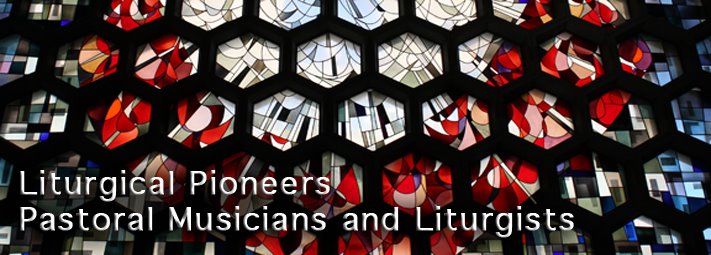Josef A. Jungmann, SJ
1889 - 1975
1889 - 1975
Born in Austria in 1889, Josef Jungmann, SJ, spent most of his career as professor of Pastoral Theology at the University of Innsbruck, where he taught both catechetics and liturgy. His name is synonymous with the "kerygmatic renewal" in Catholic catechetics. His career and contribution blur the lines of distinction between liturgical studies and catechetics because he promoted an interest in early church practices that integrated worship and catechesis. His programmatic work on the kerygmatic renewal in catechetics was first published in 1936 under the title Die Frohbatschaft und unsere Glaubensverkundigung (The Good News and Our Proclamation of the Faith). While Jungmann is well known for this work in catechetics, his name is also associated with the renewal of the Eucharistic liturgy at Vatican Council II (1962-65). His historical study of the Eucharistic liturgy, The Mass of the Roman Rite, made him a natural choice as a peritus (expert) at Vatican II and a member of the commission that had principal responsibility for the composition of the document on the renewed Catholic Eucharistic liturgy, Sacrosanctum Concilium, promulgated by the Second Vatican Council in 1964. Jungmann died at Innsbruck in 1975.
Biography
From the early stages of adult life, Josef Andreas Jungmann's pastoral experience and scholarship merged to produce his explicit interest in catechetics, liturgy and their intersection for the good of the pastoral life of the church and the spiritual life of its members (Hofinger, 1976, p.350-352).
Jungmann was born in a village in the mountains of South Tyrolia, Austria in 1889. Following his early education locally, he entered the seminary and was ordained to the Roman Catholic priesthood in 1913. After ordination to the priesthood, he worked in small village churches in the diocese of Brixen and began to cultivate an interest in catechesis. During his days in parish ministry, Jungmann kept notes about the fear-laden piety of the local people that, in his assessment, contradicted the joyful nature of the good news he sought to preach. His experiences and the recollections they generated were recorded in his first manuscript, written in longhand in a notebook, entitled Der Weg zur Christlichen Glaubensfreudigkeit (The Way to Christian Joyousness). This "working thesis" of 1915, never published as such, fueled his most famous catechetical treatise, Die Frohbotschaft und unserer Glaubensverkundigung (The Good News and Our Proclamation of the Faith) (Riepe, 1968, p.34).
In 1917, four years after ordination, Jungmann entered the Society of Jesus (the Jesuits). Jungmann prepared to teach liturgy and catechetics at the University of Innsbruck. With the exception of the years during which Hitler closed down the theological faculty (1939-45), Jungmann's entire teaching career was spent at Innsbruck, where for a time he also served as Rector of the community of Jesuits.
Jungmann's most famous student of catechetics, Johannes Hofinger, claimed that Jungmann's academic career was colored by an abiding concern for the intersection of pastoral practice and scholarship, especially historical studies. These two important partners of practice and scholarship in the church's life frequently suffered, in Jungmann's view, from strained communication (Hofinger 1976). Jungmann's writings try to bring both partners into a conversation for the benefit of renewed practice. Hofinger characterized Jungmann's personality as a contribution to the project, a personality that contributed to " … his deep faith and pithy religiosity, his creative but disciplined thought, and his sense for history and living tradition, the gift of expressing his mind in plain language and good style"(1976, p. 350).
Although Jungmann spent most of his life at Innsbruck teaching catechetics, pastoral theology, and liturgy, he affected many practitioners in the field of catechesis. Jungmann never lost touch with prevailing pastoral practices because he demanded that his students - seminarians and others - familiarize him with the various pastoral situations in which they operated. His lectures, given in the 1950's in the United States, affected many practitioners in the field of catechetics in North America (Fischer, 1975). Chief among those who were influenced by Jungmann's ideas were the many women (principally Catholic religious Sisters) who taught in North American parish schools and religious education programs, and who studied in universities during summer months. While the lecture programs had a lasting effect on practitioners, Jungmann's many works on catechetics and liturgy also affected the academic community and the official Catholic hierarchy. Jungmann was invited to Vatican Council II as a peritus (expert), where he contributed greatly to the design and writing of Sacrosanctum Concilium, the Vatican II document on liturgy and worship, one of the sixteen produced by the Council.
Tribute prepared by Michael P. Horan.

